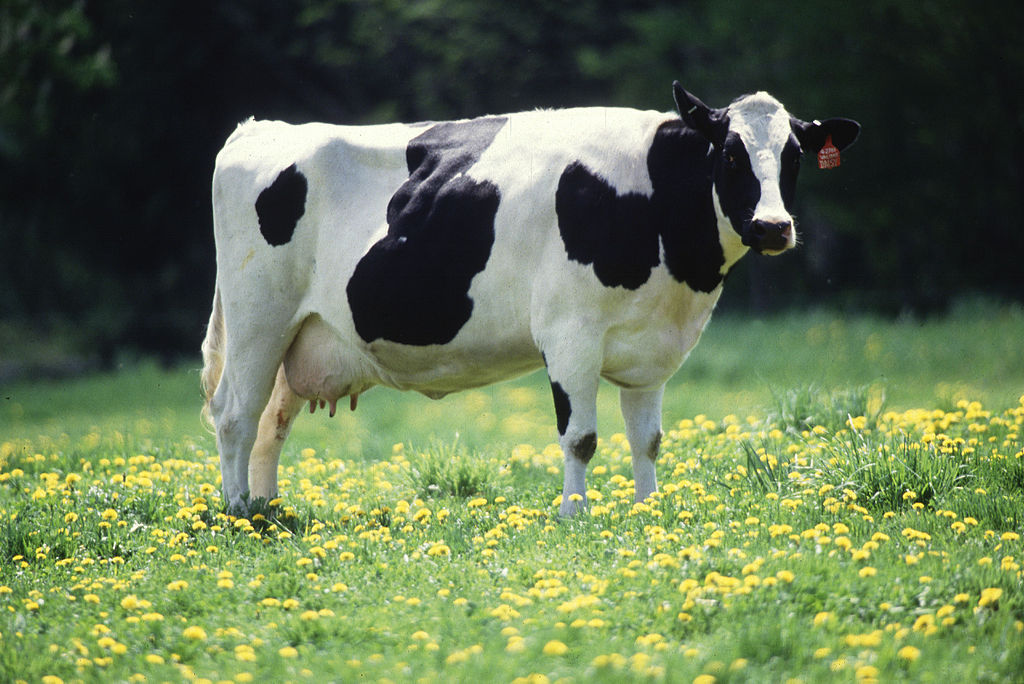What does a cow need all those stomachs for anyway?
The cow’s quirky digestive system powers the animal kingdom
Shira Polan • February 29, 2016

Who’d have thought that we all owe our lives to the humble cow? [Image Credit: Wikimedia Commons]
The sun powers all life on earth, its energy flowing from plant to beast and back again. Yet we can’t consume the sun directly. Instead, we eat plants, which have the miraculous ability to store the sun’s energy in their tissues. As predators, we also sometimes feed on other plant-eating animals, our prey doing the hard work of digging sugar out of the plant’s tough cell walls. We humans are gifted eaters, versatile and unparticular. However, we can’t get energy from grasses and other dense, abrasive vegetation — our generally jack-of-all-trades digestion system simply can’t break it down. In the battle of human stomach versus a few blades of timothy grass, the grass wins.
The humble cow, however, has no such limitations. The digestive system of cattle and other bizarrely stomached ruminants like goats and deer is made of sterner stuff. Most people have heard of the cow’s four stomachs. In reality, cattle have one stomach divided into four compartments — the key to grass eating. As grass journeys through the digestive system, each compartment plays its own, specific role, like a factory worker on an assembly line, to turn raw, fibrous plant matter into useable energy.
Before those mouthfuls of grass reach the stomach, they must first be chewed. Cattle are first-class masticators, munching for roughly eight hours a day. When a cow grazes, it snatches up bites of grass, trying to grab as much food as possible in the shortest amount of time. In the wild, this limits the amount of time the cow exposes itself to predators in the wide-open pasture or meadow. The swallowed grass then enters the rumen and reticulum, the first two stomachs on the cow’s assembly — or rather disassembly — line. The partially chewed food sits in these chambers, which act as storing vats. When finished grazing, the cow will regurgitate the grass from the rumen and chew it all over again. This is called chewing cud.
The rumen not only stores, but ferments the food. It provides the perfect environment for bacteria to break down grass and feed off all the resulting sugar. The cow is left with fat produced by the bacteria, which provides most of the cow’s energy. Its reticulum helps sort out which food still needs to be chewed and broken down again, and which is ready for the next step.
After fermentation, food travels to the omasum for the next stop on the assembly line. This sponge-like compartment sucks out water, salt and minerals, and returns them to the rumen, recycling materials to help maintain the proper environment for the bacteria that live there.
Finally, the remaining food enters the abomasum. Also called the true stomach, it mirrors our own. Liberally dousing its contents with acid, the abomasum churns as its muscular lining squeezes and relaxes. Now thoroughly mashed, smashed and practically pureed, the grass cedes the last of its precious sugar. What little remains of the food can now be passed along to the intestines and out of the stomach’s domain.
The finished product — rich packets of energy housed in protein, sugar and fat — is free for the cow to use at its leisure. This energy hides inside the bonds of these molecules, ready to be liberated when the cow cracks open, say, a protein molecule. Some is stored in its body for later, or perhaps to power a hungry predator who seeks to swipe the energy from the unlucky cow’s body. In this way, cows and their ilk provide an invaluable service as an ambassador between plant and animal — ruminants are among the few in the animal kingdom with the power to transform grass into a form of energy we all can use.
3 Comments
The cow has only one stomach strictly speaking. But, in actual terms it is been divided into four chambers to form four stomachs. More Info: https://goo.gl/YNbvGJ
Very informative thank you
Buena información, didáctica y amena. Sólo deseo consultar si puede decirme que estructura o lóculo le falta a los falsos rumiantes.